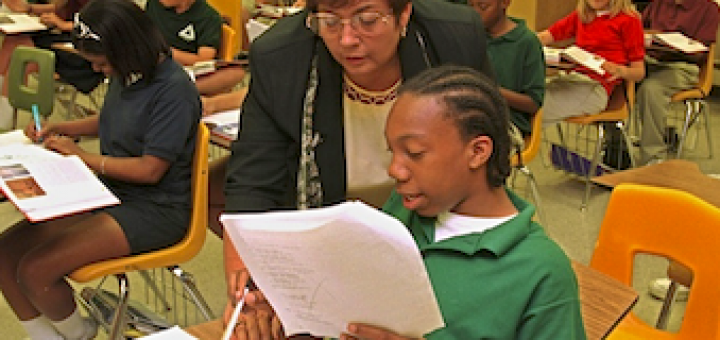Category: Teaching Writing
Teaching students to eagerly revise their first drafts is “the Mt. Everest of writing instruction,” says renowned author Ruth Culham. The originator of the 6+1 Writing Traits program argues convincingly that revision must be the primary focus of the writing curriculum.
Kelly Gallagher’s “In the Best Interest of Students” considers both the strengths and shortcomings of the Common Core ELA anchor standards. In this excerpt, Gallagher stresses the need for students to have “worthy models” at every stage of the writing process.
Summarizing may seem simple to adults, says teacher/author Heather Wolpert-Gawron, but it’s a cross content skill that many adolescents struggle with. TweenTeacher shares techniques from her classroom, including asking students to create ‘executive summaries’ of information & research.
The best way to help students learn to appreciate grammar, say authors Lynne Dorfman & Diane Dougherty, is by teaching it seamlessly within the workshop model. The Writing Project veterans share secrets for sustaining a writers community in your classroom.
An essay without a thesis might have great ideas in it, but absent an organizing principle it doesn’t hold together. Literacy expert Sarah Tantillo shares tools for thesis brainstorming & organizing that can save students and teachers time and pain.
Good writing instruction doesn’t have to be complicated, says literacy consultant Sarah Tantillo. No matter what genre you’re teaching – a paragraph, a timed essay or a full-blown research paper – she recommends these basic steps. Rubric included!
In Part 2 of her article on conferencing with student writers, teacher-author Marilyn Pryle tells how she manages multiple conferences with each student during a class period. The key: give students small manageable tasks they can do on their own.
In the first of two articles about conferencing with middle grades writers, teacher-author Marilyn Pryle identifies a pair of critical elements that need to be present in early conversations: (1) praise; and (2) a focus on meaning – not grammar.
Good writing has a theme. It’s the heartbeat of any essay or story. ELA teacher-author Marilyn Pryle shares her strategies to help students write more thematically.























